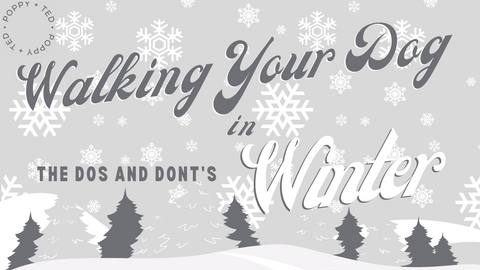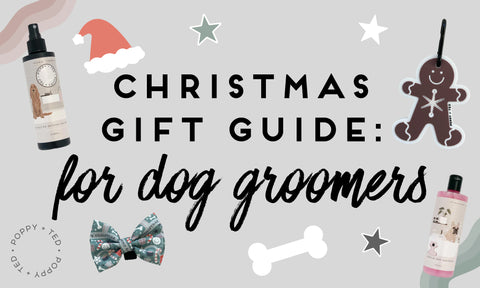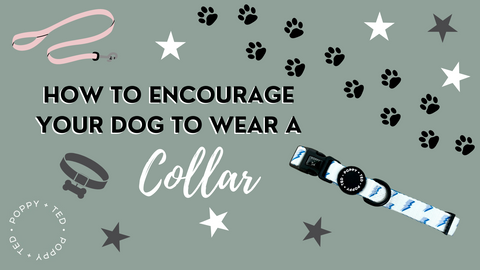
If you’re anything like us, winter has you struggling to stay active. It’s so cold, dark and miserable, and the last thing we want to do is willingly venture out into the icy air for a walk.
But let’s not forget our beloved dogs who look forward to their daily walks and sit with their tails wagging at the door, ready to leave. It’s time to pull on your big girl or boy pants, wrap up warm and bite the bullet to take them out for their usual walk.
Of course, you know how to dress and prepare to venture outside in the winter, but how can you make it easier for your dog to brave the cold and keep them safe?
Welcome to the Poppy & Ted guide to walking your dog in the winter, covering all of the most important Dos and Don’ts!
When Walking your Dog in Winter, DO:
First, let’s go over what you absolutely must do to keep your dog happy and comfortable on their winter walks. They will thank you with plenty of cuddles and love when they get back inside from the cold!
1. DO Keep Walks Short
When it’s freezing outside, you know your body's limits for what you can handle, so be mindful of when enough is enough for your furry friends. We recommend keeping your dog’s walk short and sweet on very cold days, taking them out for no more than thirty minutes at a time. Remember that larger dogs need more daily exercise than smaller pooches, so it's best to find a balance of a few shorter walks to tire them out.
Suppose you have a larger breed built for colder weather, such as Siberian Huskies, Saint Bernards and German Shepherds. In that case, you can spend a little longer outdoors if they thrive in winter.
2. DO Keep Them Warm
If you think clothes on dogs are silly, you need to change your perspective on cold weather. Of course, dogs are fluffy or hairy. Their fur coat offers them some kind of protection from the elements. Still, when it's particularly cold outside, snowing or icy, you must clothe your dog appropriately.
Wrap them up warm in a waterproof dog coat that protects them from the wind and harsh chill of the icy air, and add an extra layer of insulation to keep them warm.
You may even want to keep a few extra dog sweatshirts and fleeces in the home to help your dog warm up faster when they get back inside. You can also keep a spare with you on the walk to change your dog into if they become too wet and need something dry beneath their coat.
3. DO Keep Activity Levels Up
No matter how cold it gets, you must keep your dog’s activity levels up, even if they resist going out into the cold! If your dog is left with too much energy and feels bored at home, they can become restless and even destructive.
Did you know that your dog’s sniffing is an exercise in itself? Allowing your dog a good twenty minutes of sniffing is the equivalent of an hour’s walk, as it improves mental stimulation and increases their respiration rate. So, your dog can tire themselves out just by using their nose, so make the most of shorter winter walks by placing a few treats for your dog to sniff out.
You can also encourage your dog to do a few tricks while out on their winter walk and reward them with treats after spending half an hour outside to the fullest.
4. DO Keep Toe Hair Short
As the months turn colder, we tend to minimise grooming sessions for our dogs to keep their fur longer, so they feel warmer. This is smart thinking as long as you’re not leaving your pup’s unkept, which means keeping hair from poking them in the eyes, for example.
But you should also trim your dog’s toe hairs to ensure their comfort while walking on snow and ice. These can accumulate on your dog’s fur, making walking incredibly difficult and even painful. For fluffy dogs, you might want to minimise the risk even further by choosing a pair of boots for your dog that keeps their paws safe and protected from the harsh winter weather.
When Walking your Dog in Winter, DON’T:
Now you know what you should do when walking your dog in winter, it’s important also to be mindful of what you should avoid when walking your dog in winter.
1. DON’T Let Your Dogs Eat Snow
We all love to catch a snowflake on our tongues, and your dog being overly interested in the snow by their feet may seem harmless, but you should stop your dog from eating it. Not just the yellow kind, either!
If you’re worried it’s already too late, don’t worry. A little snow won’t do much harm, but too much can be risky. This is because you never know what might be in the snow. Hidden chemicals, antifreeze and other contaminants can leave your dog with an upset stomach, resulting in diarrhoea and vomiting.
To minimise your dog’s temptation to eat snow, ensure they have a fresh drink of water before leaving the house and bring a travel bowl with you so your dog can quench their thirst.
2. DON’T Ignore Warning Signs
When researching what dog breed suits you best, you will most likely read about their tolerances for different weather conditions. Which means what season they thrive in most.
But even though you might think that you know what your dog can tolerate when it comes to temperature and weather, you must still look out for visual cues displayed by your dog. They will let you know if they are too cold and ready to go back inside.
Cues displayed by your dog might include the obvious, like whining and shivering. Lifting or licking paws excessively are also key signs your dog is not dealing with the cold well.
You should also avoid leaving your dogs unattended in the garden during winter, especially smaller breeds that are not as well equipped to deal with the cold.
3. DON’T Forget to Moisturise
There is no better feeling than getting back inside after a cold and blustery winter walk. It’s tempting to dive straight onto the sofa wrapped in a blanket, but first, you must take care of your dog and get them comfortable too.
Did you know that you should moisturise your dog’s paws? Just like you moisturise your face, use hand cream and apply lip balm to combat dry and chapped skin, paws need the same TLC.
The dry winter air can cause damage to your dog’s paws, making them rough, sore and split. So, choose a paw wax or pet-safe skin conditioner to apply to your dog’s clean paws to prevent them from drying out. However, if you don’t have any on hand and need some quick, you can also use coconut oil. Any moisturiser you use on your dog must be non-toxic, as they will likely try and lick it off, but coconut oil is a great source of fats and vitamins.
4. DON’T Let Them Off-Lead
Finally, it is important to remember not to let your dog stray from you when walking in cold weather. We recommend keeping them on a tight lead so you can keep an eye on them and quickly manoeuvre them out of danger.
This is also essential in particularly icy conditions. You can never be too sure how solid ice is; your dog could fall through and even pull you with them. It’s also best to put the retractable lead away for the winter season and keep your dog by your side on a standard lead so you can control its environment.
Keep your Dog Safe on their Walk
Walking your dog in winter may sound scary now that we have listed all the potential dangers, but don’t worry, now you’re the best prepared!
Follow our advice and tips for walking your dog safely in winter and enjoy breezy walks together, followed by cuddles to warm back up. By knowing the information in our guide, you are better equipped to take your dog outside to exercise and have fun while being safe.
Don’t forget to stock up on the supplies you need for the colder months with dog sweatshirts, fleece and coats that will protect them from the elements. As well as shop collars, harnesses and leads perfect for walkies in every season.
Related
Harness Vs Collar: Which Is Better For Your Dog?



